Load testing is a type of non-functional software testing that checks how an application performs under a specific expected load. It helps determine whether the system can handle high volumes of users, data, and transactions in real time. Load testing comes under Performance testing which is a broader term that includes load testing, stress testing, soak testing, and spike testing. The goal is to assess how well a system performs under various conditions, ensuring it is fast, stable, reliable, and scalable.
Top 10 Load Testing & Performance Testing Tools (2025)
1. Apache JMeter

Apache JMeter is a popular open-source Java-based tool used for load testing and performance measurement. Originally designed for web applications, it now supports a range of services and protocols. Teams already using JMeter can further enhance automation by integrating it with CI/CD tools for scalable web apps, ensuring consistent performance validation across builds.
Key Features:
- GUI and CLI support
- Supports HTTP, FTP, JDBC, SOAP, REST, JMS
- Real-time charts and reports
- Plugin ecosystem for custom use cases
Pros:
- Free and open source
- Easy to integrate with CI/CD
- Highly extensible
Cons:
- Java dependency
- Not ideal for very high-load distributed testing without tuning
2. LoadRunner (by Micro Focus)
One of the most comprehensive performance testing tools, LoadRunner is widely used by enterprises for its simulation capabilities of thousands of users simultaneously.
Key Features:
- Supports multiple protocols (Web, Java, Citrix, Oracle, etc.)
- In-depth performance analytics
- Load generators across the cloud
- Integration with DevOps pipelines
Pros:
- Enterprise-grade tool
- Great analytics dashboard
- High accuracy and scalability
Cons:
- Expensive licensing
- Steep learning curve for beginners
3. k6 (by Grafana Labs)
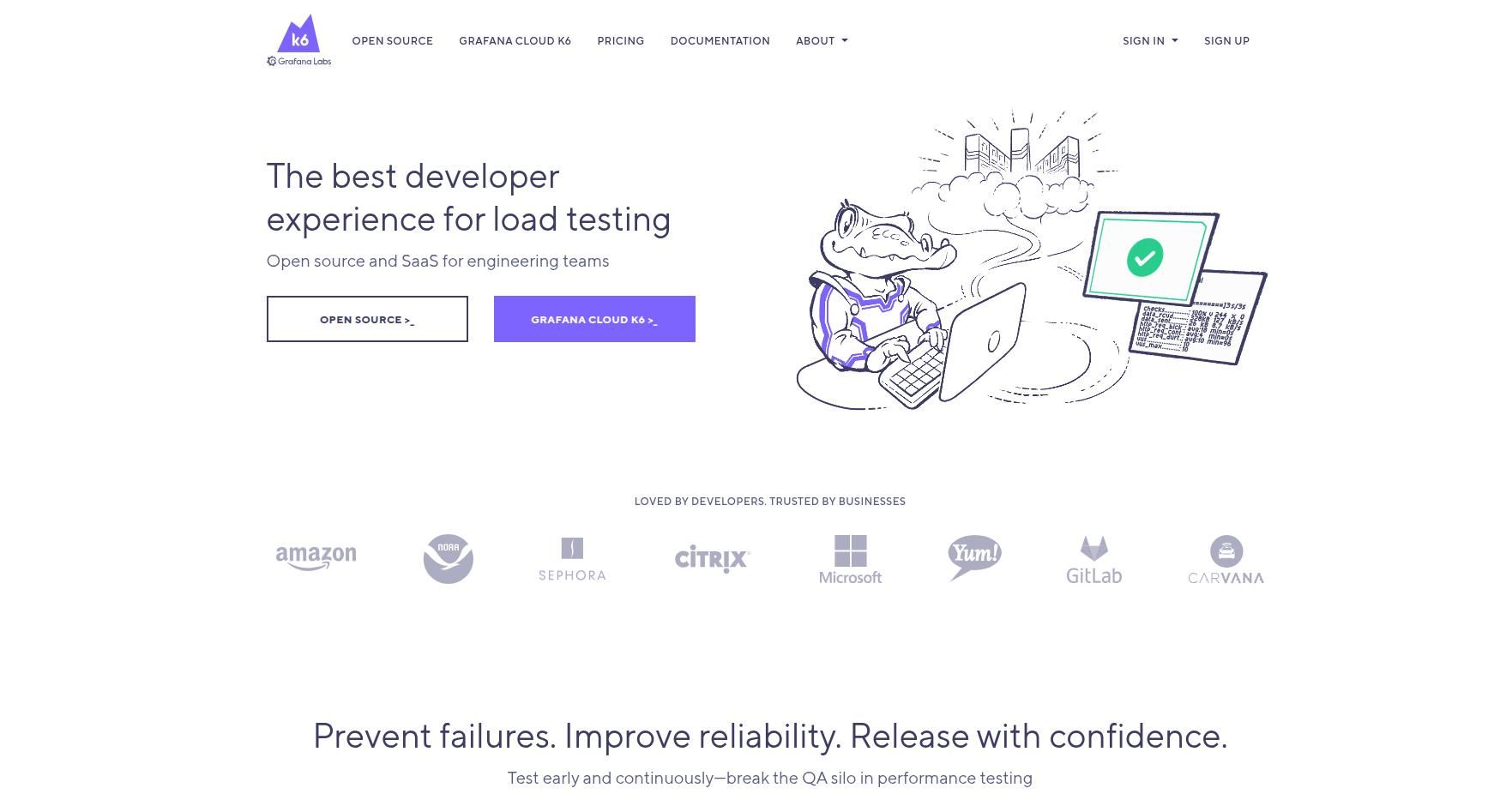
k6 is a modern open-source load testing tool for developers, designed for scripting performance tests using JavaScript. If your app stack involves APIs or microservices, MERN stack development helps to build resilient foundations that integrate seamlessly with load testing workflows like k6.
Key Features:
- Scripting with JS ES6
- CLI and cloud test execution
- Built-in checks and thresholds
- CI/CD integration (GitHub, GitLab, Jenkins)
Pros:
- Lightweight and fast
- Developer-friendly scripting
- Works well with Grafana for visual monitoring
Cons:
- Limited UI for test creation
- Doesn’t support as many protocols as JMeter
4. Gatling
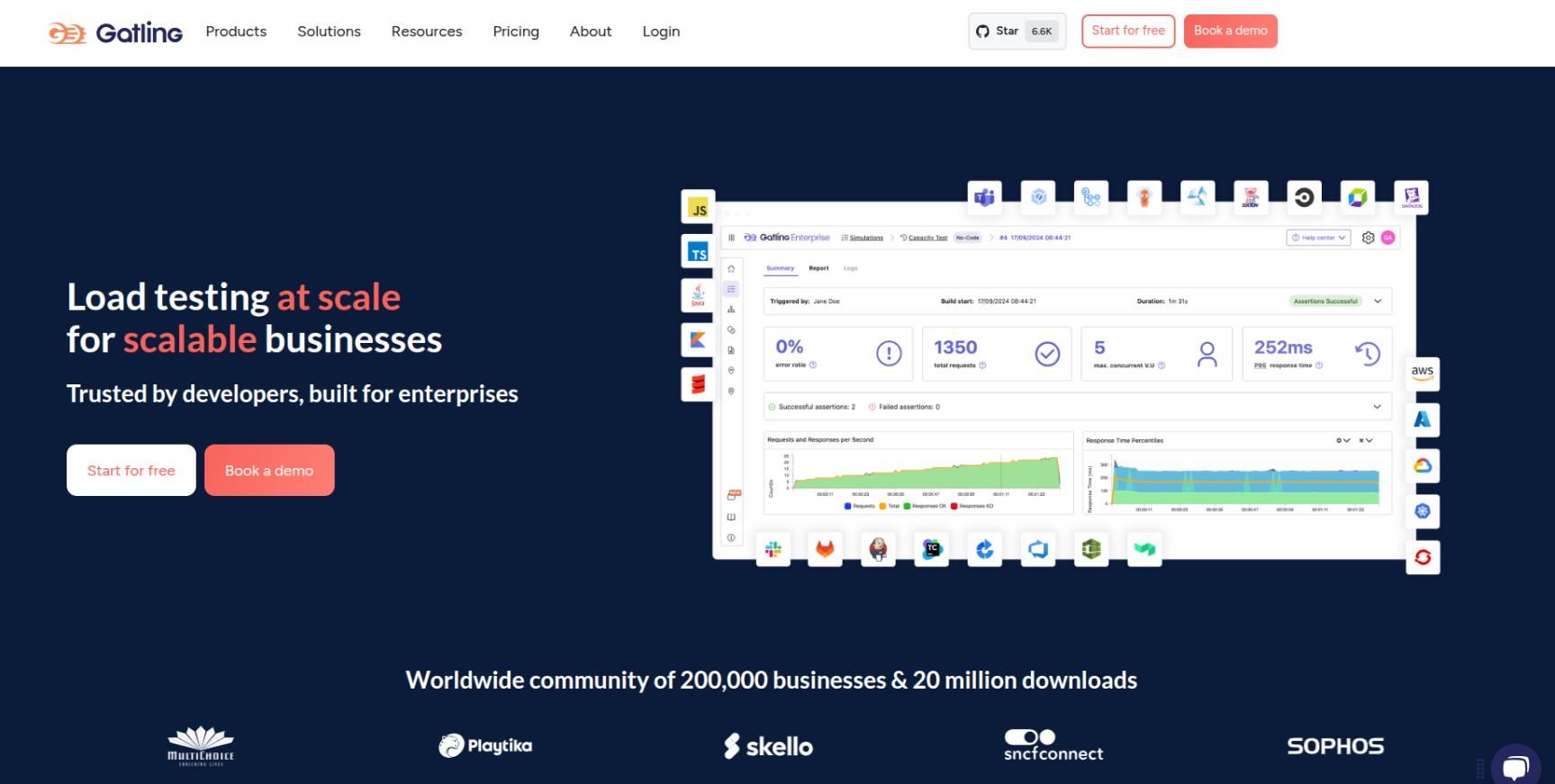
Gatling is another open-source performance testing tool focused on HTTP servers. It is popular among developers for its elegant DSL (Domain Specific Language) written in Scala.
Key Features:
- DSL-based scripting
- Real-time metrics and assertions
- CI/CD compatible
- Gatling Enterprise for distributed testing
Pros:
- Powerful for HTTP and WebSocket testing
- Developer-centric
- Detailed reports
Cons:
- Limited protocol support
- Scala DSL may have a learning curve
5. BlazeMeter
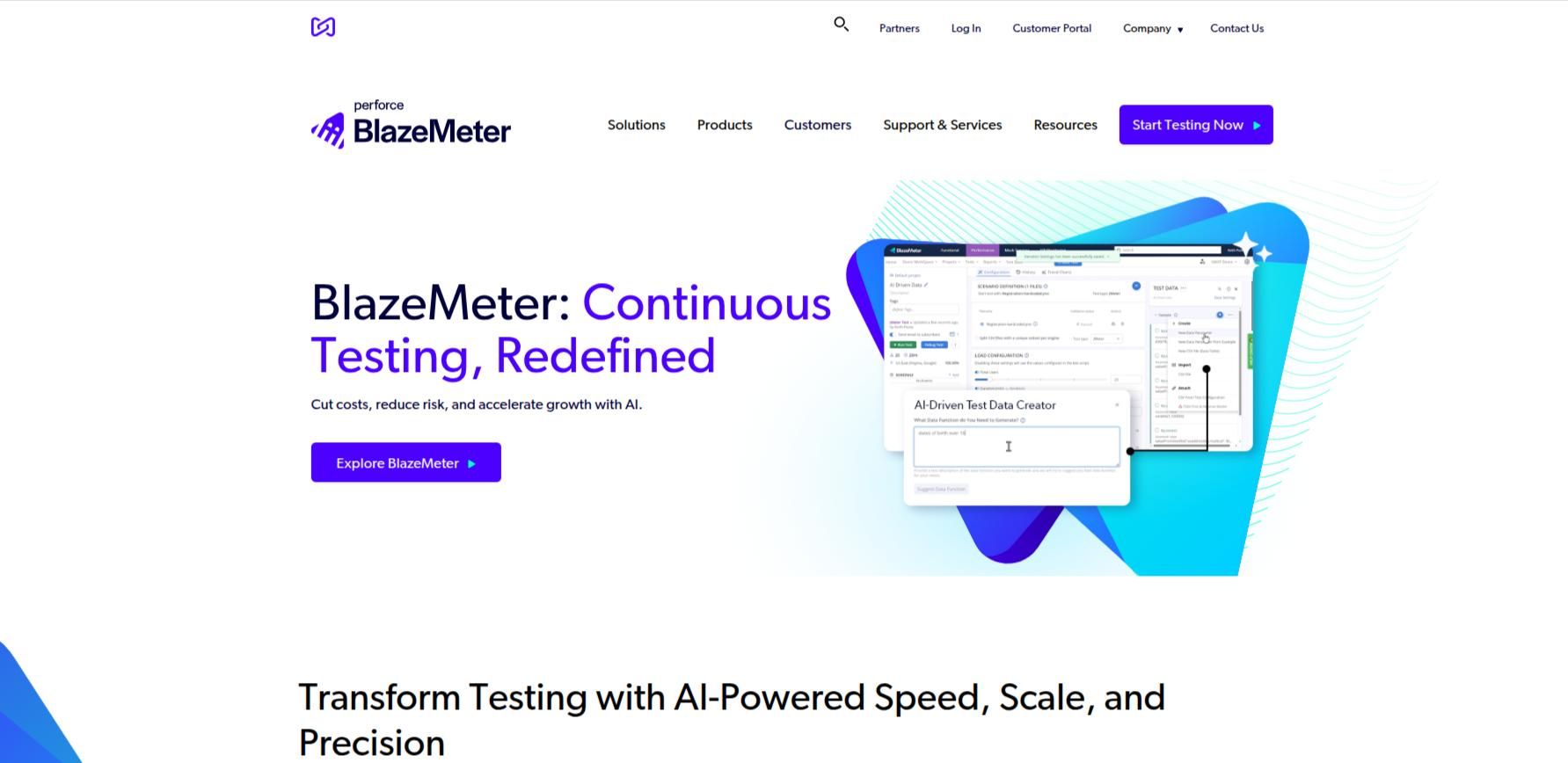
BlazeMeter is a cloud-based performance testing platform that extends the capabilities of Apache JMeter and other open-source tools. BlazeMeter with JMeter compatibility makes it ideal for integrating performance testing with your ReactJS development pipelines, particularly for SPAs under user-intensive workloads.
Key Features:
- 100% JMeter compatible
- SaaS platform for global test distribution
- Real-time performance metrics
- Integrations with Jenkins, Git, New Relic
Pros:
- Easy-to-use cloud interface
- No infrastructure required
- Scalable for large user simulations
Cons:
- Paid plans for larger teams
- Dependency on JMeter knowledge
6. NeoLoad (by Tricentis)
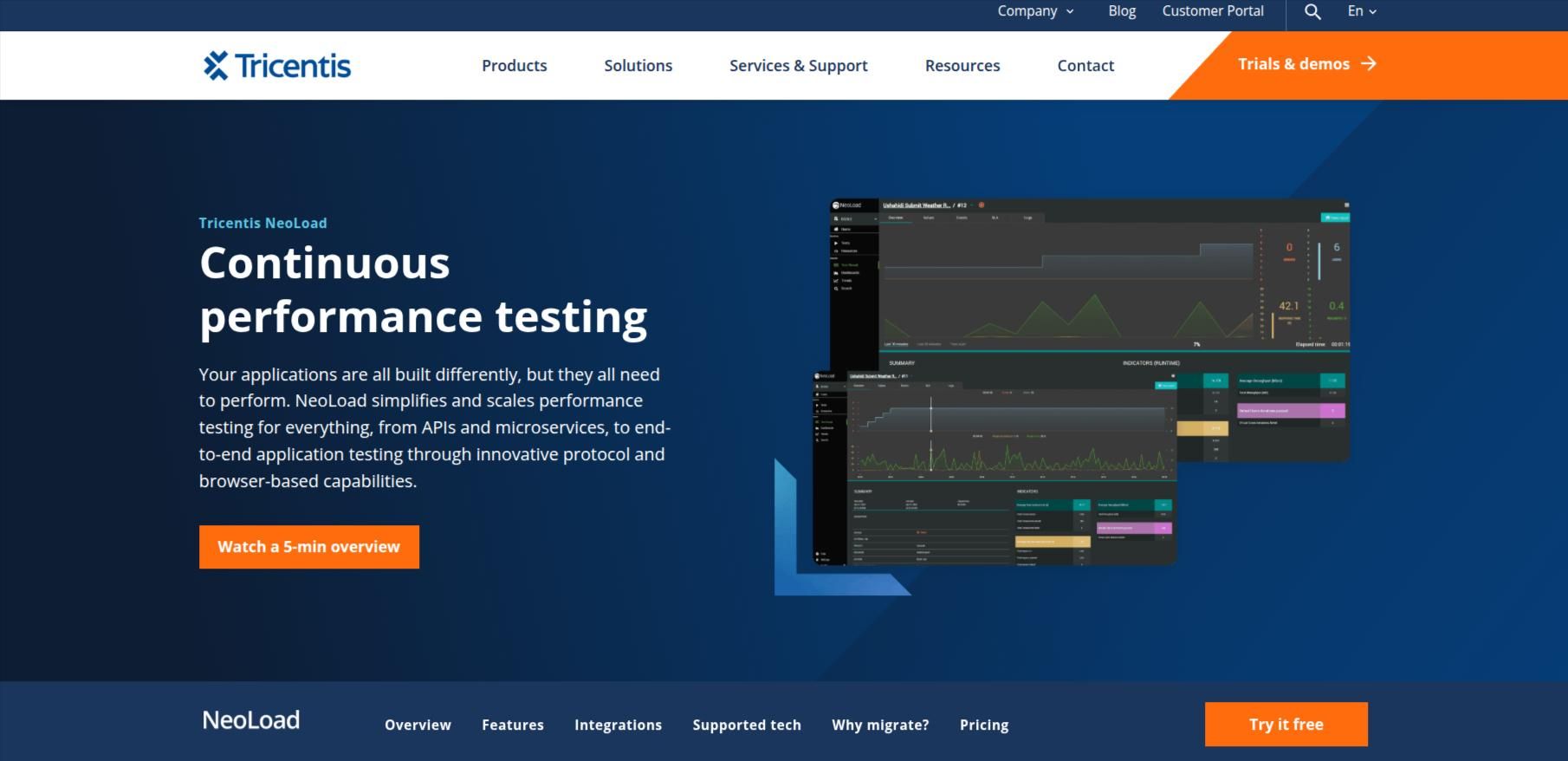
NeoLoad is a powerful load testing solution used by performance engineers to simulate real-user behavior at scale for web, mobile, and enterprise applications. Organizations moving toward modular and API-first architecture, should consider aligning with web development experts for implementing performance strategy properly.
Key Features:
- GUI + scriptless test creation
- Reusable test components
- CI/CD automation support
- Support for SAP, Citrix, Oracle, and more
Pros:
- Fast test creation
- Great for enterprise integrations
- In-depth performance insights
Cons:
- High pricing
- Limited free trial capabilities
7. Artillery
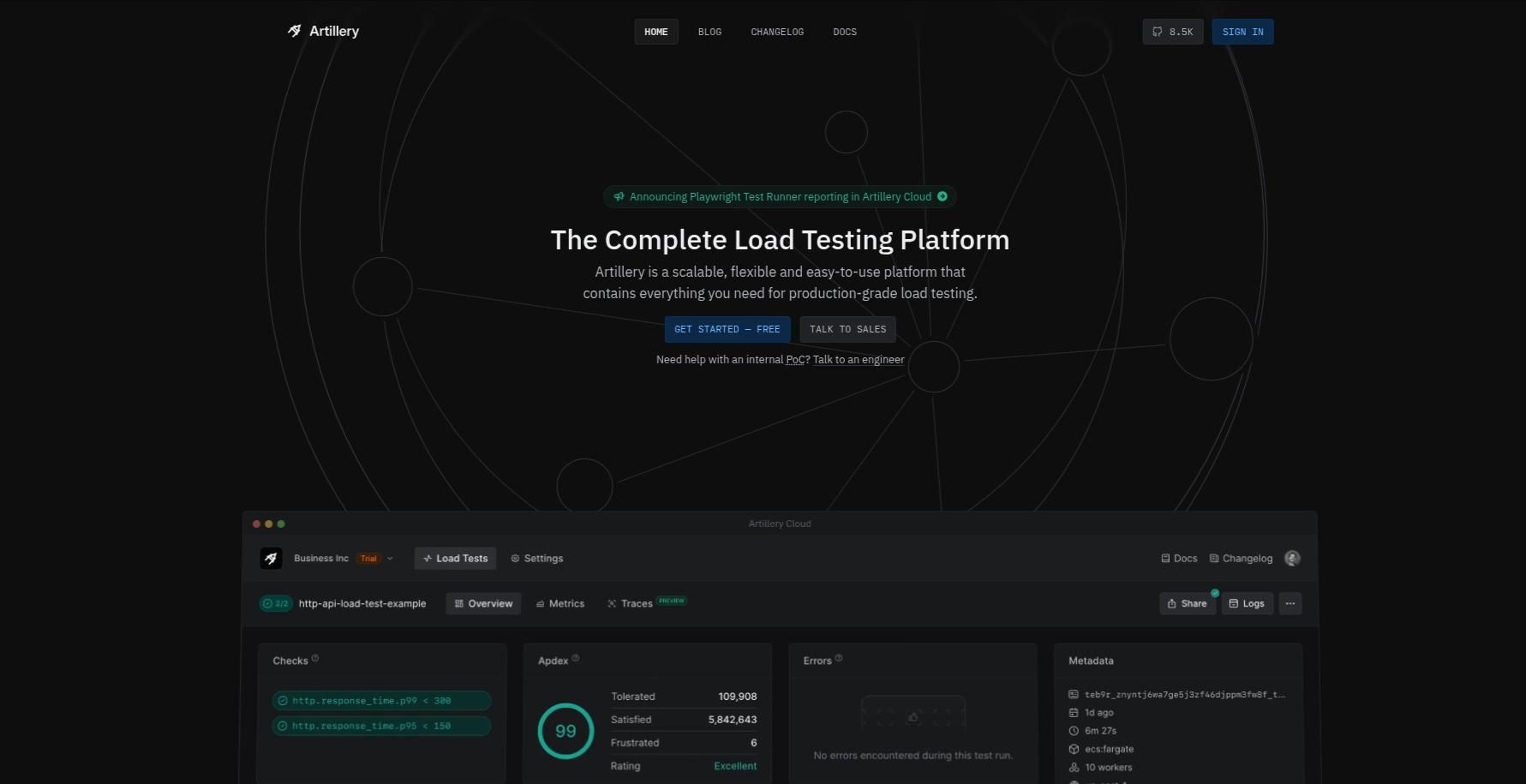
Artillery is a modern, open-source CLI tool for testing backend APIs and microservices with YAML and JavaScript scripting.
Key Features:
- Test HTTP, WebSocket, Socket.io
- CLI and CI/CD friendly
- Lightweight and scalable
- JSON/YAML test definition files
Pros:
- Easy setup and scripting
- Developer-first tool
- Great for API and serverless testing
Cons:
- No GUI
- Limited for large-scale enterprise testing
8. Locust

Locust is a Python-based, open-source load testing tool that enables you to write test scenarios as code in pure Python.
Key Features:
- Simple Python syntax
- Distributed & scalable testing
- Web-based UI for monitoring
- Great for simulating complex user behavior
Pros:
- Python community support
- Easy to scale
- Flexible scripting
Cons:
- Requires Python knowledge
- Not great for non-programmers
9. TestRail Performance Center
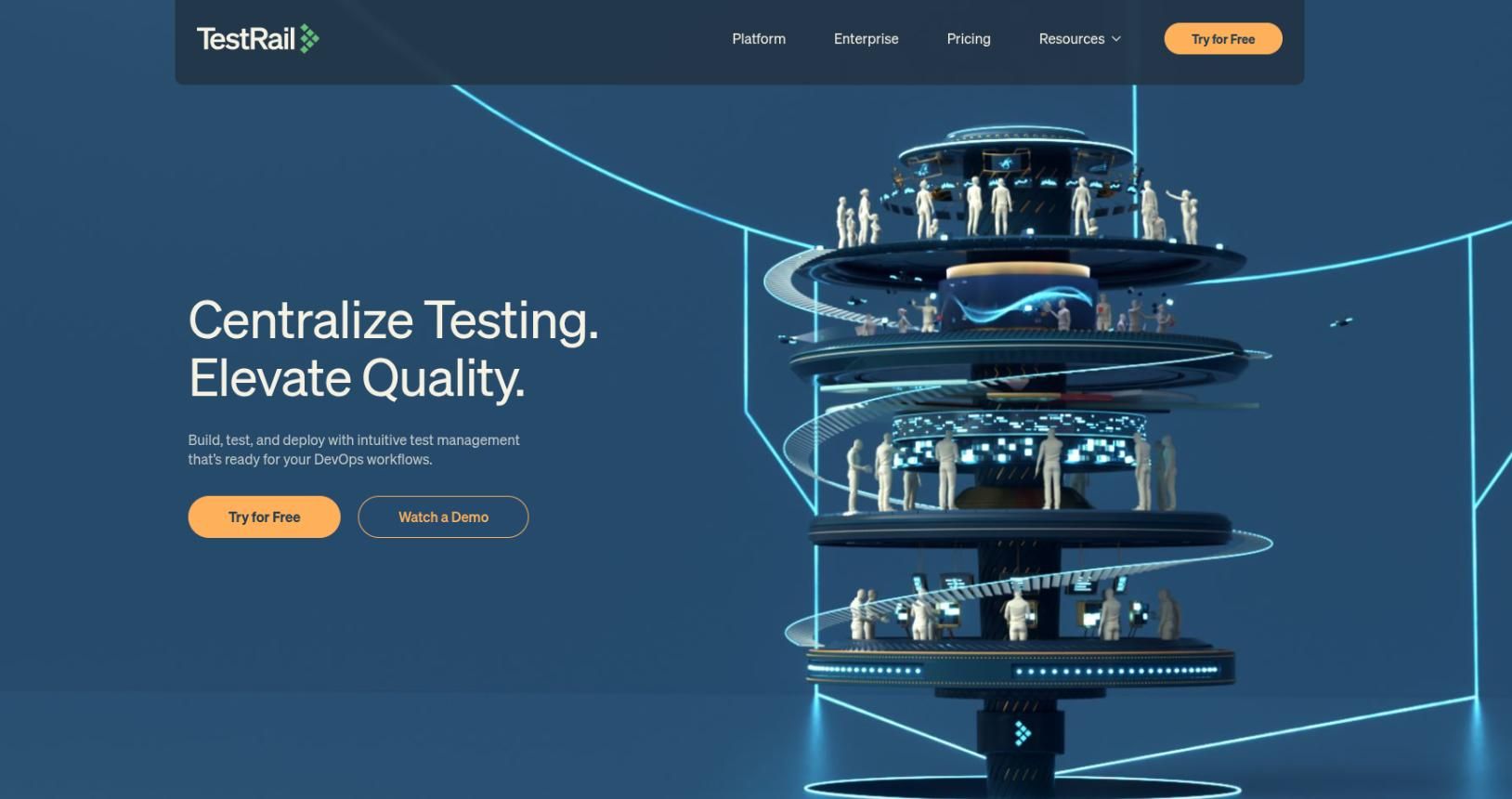
While TestRail is a test management tool, it integrates well with JMeter, LoadRunner, and other performance tools to centralize performance test results.
Key Features:
- Test case and result management
- Supports plug-ins for performance tools
- Reporting and documentation hub
- CI/CD integrations
Pros:
- Centralized visibility
- Great for enterprise test lifecycle management
- Works with multiple tools
Cons:
- Not a standalone performance tool
- Requires integration effort
10. WebLOAD (by RadView)
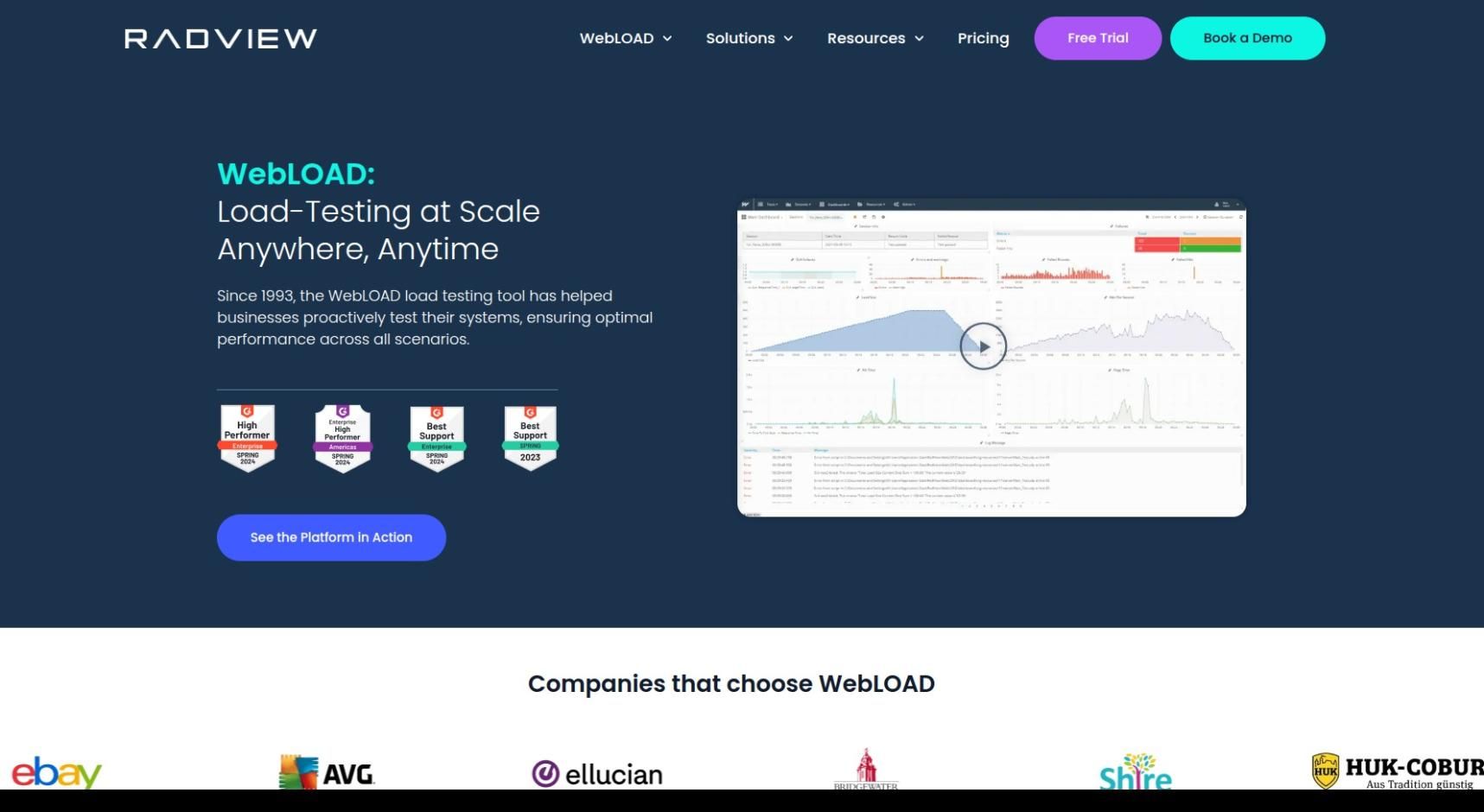
WebLOAD is a commercial-grade performance testing tool known for handling complex testing scenarios for large-scale enterprise systems.
Key Features:
- Scriptless recording
- Advanced analytics and anomaly detection
- Real-time reporting dashboard
- Works with cloud and on-prem environments
Pros:
- Enterprise-friendly
- Detailed analytics
- Supports various environments (ERP, CRM, cloud apps)
Cons:
- Costly for small teams
- Less community support than open-source tools
Embracing Load & Performance Testing for Sustainable Digital Success
In the digital era where users demand seamless, fast, and reliable application experiences, performance testing is no longer an optional luxury—it’s a strategic necessity. From startups deploying their first web applications to Fortune 500 enterprises managing global platforms, the ability to accurately simulate real-world loads, identify performance bottlenecks, and optimize systems at scale is essential.
Load testing and performance testing tools play a central role in delivering this ability. They not only help ensure that applications remain functional under expected user loads but also offer predictive insights into how systems will behave under stress, during sudden spikes in traffic, or over extended periods of use. With the rise of distributed systems, microservices, containerized apps, and globally deployed infrastructure, the performance landscape is growing in complexity—and so is the need for the right testing tools.
The Strategic Importance of Load and Performance Testing
1. User Experience as a Differentiator
Users today expect near-instantaneous response times. Research shows that a delay of even one second in page load can reduce conversions by 7%. Whether it’s a shopping cart failing during a flash sale or a banking app freezing during a transaction, poor performance can severely damage brand reputation and result in customer churn. Load and performance testing help prevent such disasters by proactively identifying and resolving issues before users ever notice.
2. Infrastructure and Cost Optimization
Performance testing doesn’t just protect user experience—it also helps optimize resource utilization. By understanding how your infrastructure behaves under different loads, you can right-size your servers, containers, and cloud resources. This means reducing cloud costs while maintaining performance. It also helps avoid overprovisioning and lets organizations plan their capacity with confidence.
3. Agile and DevOps Readiness
Modern software development practices like Agile, CI/CD, and DevOps emphasize rapid iterations and continuous deployment. Performance testing tools like k6, JMeter, and Gatling seamlessly integrate into these pipelines, enabling teams to test as they build. This shift-left approach ensures performance isn’t treated as an afterthought—it becomes part of the development DNA.
4. Regulatory and SLA Compliance
For industries like finance, healthcare, or telecom, performance compliance isn’t just about user satisfaction—it’s about adhering to regulations and SLAs (Service-Level Agreements). Testing tools help validate throughput, latency, and uptime metrics, which are often subject to audit or contractual obligations.
Common Tool Selection Scenarios
- Small Agile teams: k6, Artillery, or Locust
- QA-heavy mid-size teams: JMeter or BlazeMeter
- Large regulated enterprise: LoadRunner, NeoLoad, WebLOAD
- DevOps-first teams: Gatling, k6, or BlazeMeter
- API and Microservice-heavy products: Artillery, k6, or Locust
Future of Load Testing Tools in 2025 and Beyond
1. AI-Driven Load Modeling
As AI and ML evolve, we’re seeing load testing tools begin to use historical data to simulate more realistic and predictive traffic patterns. This helps improve test accuracy and align better with production behaviors.
2. Test Automation and Shift-Left Performance
The DevOps world is witnessing a shift-left approach where performance tests are run earlier in the SDLC. Tools like k6 and Gatling are already capitalizing on this trend, integrating smoothly with test automation workflows.
3. Cloud-Native Load Testing
Modern applications are hosted in dynamic environments—Kubernetes, serverless, containers, etc. Tools are increasingly adapting by offering cloud-native agents and integrations with observability platforms like Prometheus, Grafana, and New Relic.
4. Unified Performance Engineering Platforms
The future lies in tools that combine functional, performance, security, and usability testing under one platform. While this vision is still evolving, products like BlazeMeter and NeoLoad are moving toward this direction with modular offerings.
Final Thoughts
In a world where milliseconds can make the difference between retention and abandonment, performance testing is as important as feature development. The right tool ensures that your applications are battle-ready—not just under expected load, but also under the edge cases and extreme conditions that occur in real-world scenarios.
Whether you're a solo developer launching an API, a QA team working across multiple mobile platforms, or an enterprise managing millions of concurrent users, there's a tool tailored to your context.
What matters most is adopting a performance-first mindset, choosing tools that align with your workflow, and consistently testing in production-like environments. With that approach, you're not just testing systems—you’re building resilient, scalable, and user-centered digital experiences.

